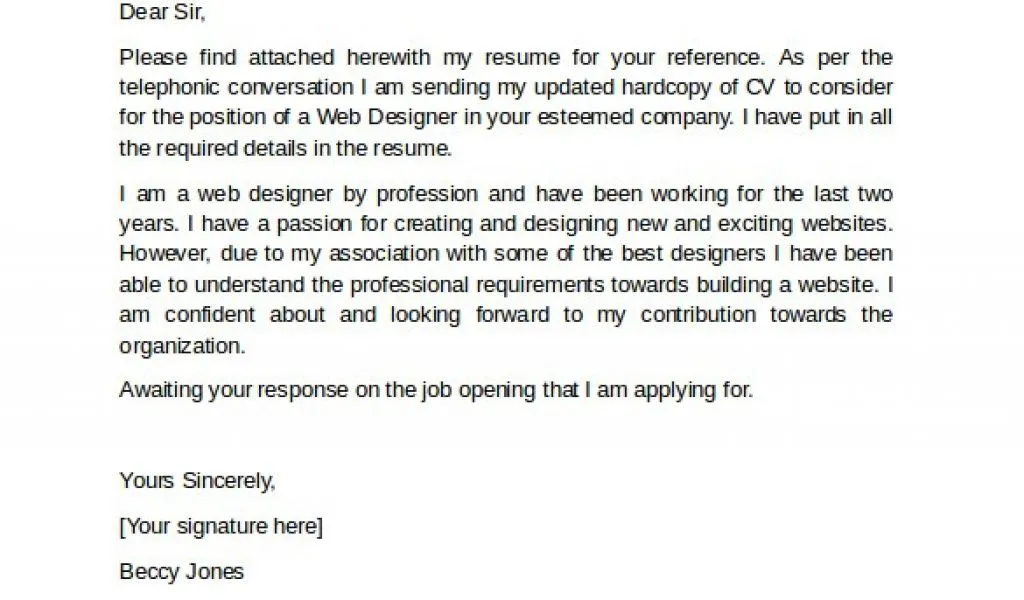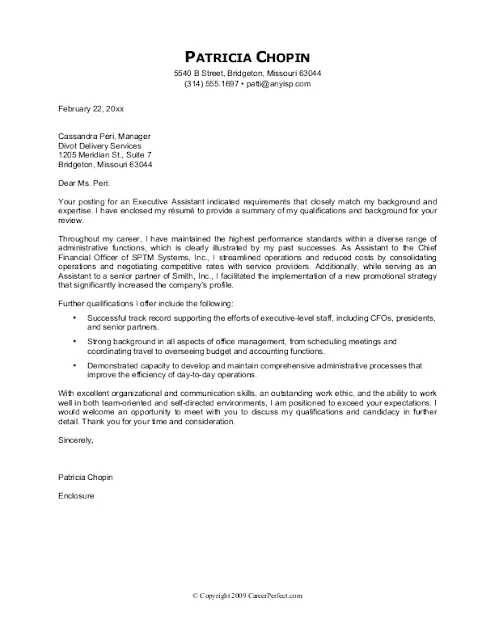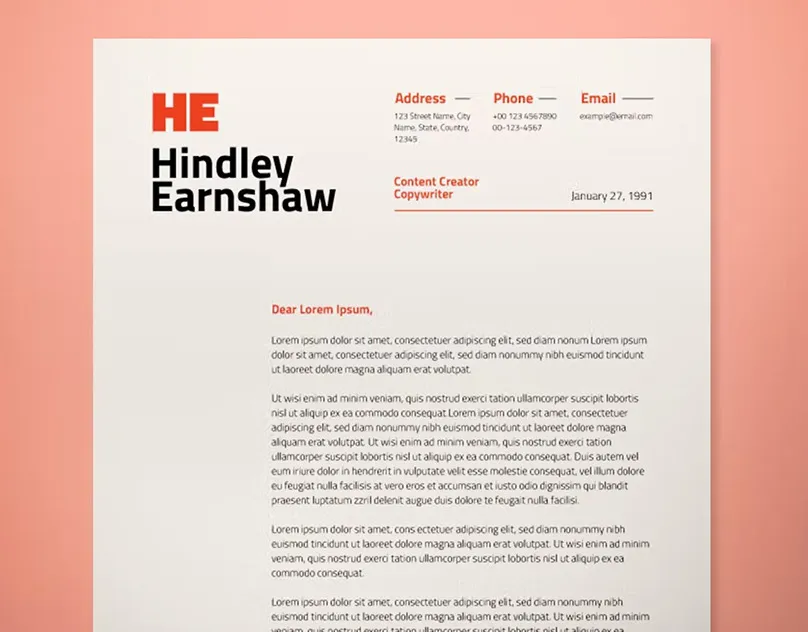Why Cover Letters Still Matter
In an age of digital applications and streamlined hiring processes, you might wonder if cover letters still hold their weight. The answer is a resounding yes. While a resume provides a snapshot of your qualifications, a cover letter offers a unique opportunity to showcase your personality, passion, and how your skills align with the specific job and company. Recruiters and hiring managers often use cover letters to gauge your writing skills, attention to detail, and genuine interest in the position. A well-crafted cover letter can set you apart from other applicants, demonstrating your communication skills and enthusiasm, and ultimately increasing your chances of landing an interview. It allows you to tell your story, explain gaps in your resume, and highlight experiences that are relevant to the job. So, don’t underestimate the power of a compelling cover letter in your job search strategy – it’s a critical tool for making a strong first impression.
First Impressions What to Include in Your Opening
Your opening paragraph is your first and often only chance to grab the reader’s attention. It should be concise, compelling, and immediately establish your purpose. Begin by addressing the hiring manager by name, if possible, which shows you’ve done your research. Then, state the position you’re applying for and briefly explain where you found the job posting. Next, immediately highlight one or two of your most relevant skills or experiences, ideally ones that directly match the job requirements. This demonstrates that you understand the role and have the qualifications the company is seeking. Avoid generic phrases like “I am writing to express my interest.” Instead, use a strong, confident tone and directly state why you are a good fit. The opening is also where you can inject a little personality, but keep it professional. A memorable opening can hook the reader and encourage them to delve deeper into your cover letter, increasing your chances of making a positive impression and getting your resume read.
Highlighting Your Skills and Experience

The body of your cover letter is where you demonstrate your qualifications and how they align with the job requirements. This is not a place to simply repeat your resume; instead, provide context and elaborate on your experiences. Choose 2-3 key skills or experiences from your resume that are most relevant to the position and the company’s needs. For each skill, provide specific examples of how you’ve used it to achieve positive results in previous roles. Use the STAR method (Situation, Task, Action, Result) to structure your examples, making them concise, compelling, and easy to understand. This shows the hiring manager not just what you’ve done, but also the impact you made. Quantify your achievements whenever possible by using numbers or metrics to demonstrate the scope of your accomplishments (e.g., “Increased sales by 15%,” or “Managed a team of 10 people”). This level of detail gives the hiring manager tangible evidence of your capabilities and makes your application stand out.
Tailoring Your Cover Letter to the Job
One of the most important tips for writing an effective cover letter is tailoring it to each specific job you apply for. Generic, one-size-fits-all cover letters are easily spotted and often discarded. Before you start writing, carefully review the job description, paying close attention to the required skills, qualifications, and responsibilities. Identify the key words and phrases used in the job description and incorporate them into your cover letter, but do not keyword stuff. Demonstrate a clear understanding of the role and how your skills and experiences align with the company’s needs. Provide specific examples of how you have successfully performed similar tasks in the past, using the language and terminology used in the job posting. Tailoring your cover letter shows the hiring manager that you’ve taken the time to understand the position and are genuinely interested in the opportunity. Customization demonstrates your dedication and enhances your chances of getting an interview.
Researching the Company and Showing Interest
Demonstrating your knowledge of the company is a crucial element of an impressive cover letter. Recruiters want to see that you’ve done your homework and are truly interested in the organization. Before writing your cover letter, research the company’s mission, values, products or services, and recent news or developments. Mentioning something specific you admire about the company, or explaining why you are drawn to its culture, can make a strong impression. You can also reference any relevant industry trends or challenges that the company is facing and explain how your skills and experience can help them. Showing that you understand their business and are eager to contribute to their success demonstrates initiative and genuine interest, setting you apart from candidates who only focus on their own needs. This level of preparation tells the hiring manager you are not just looking for a job; you are seeking a long-term opportunity with their company.
Formatting and Design Best Practices

The formatting and design of your cover letter can have a significant impact on how it is received. A well-formatted cover letter is easy to read and demonstrates professionalism. Use a clear, readable font such as Times New Roman, Arial, or Calibri, with a font size of 11 or 12 points. Keep the letter concise, ideally one page long. Use single-spacing within paragraphs and double-spacing between paragraphs to create visual breaks. Use clear headings and bullet points to organize information and make it easy to scan. Left-align your text, avoiding full justification, which can create uneven spacing. Avoid using excessive colors, graphics, or unusual fonts, which can distract from the content. Ensure the letter has a professional layout. Proofread the document carefully to ensure consistent formatting throughout. A well-designed cover letter shows attention to detail and professionalism, making a positive impression on the hiring manager.
Proofreading Your Cover Letter for Errors
Proofreading your cover letter is an essential step in the application process. Errors in grammar, spelling, and punctuation can undermine your credibility and suggest a lack of attention to detail. Before submitting your cover letter, carefully read through it multiple times, checking for any mistakes. It can be helpful to read the letter aloud, as this can help you catch errors you might miss when reading silently. Use a spell checker and grammar checker, but don’t rely on them completely, as they may not catch all errors. Ask a friend, family member, or career advisor to review your cover letter, as a fresh pair of eyes can often spot mistakes you’ve overlooked. Ensure all names, titles, and contact information are correct. A polished, error-free cover letter demonstrates professionalism and shows the hiring manager that you are committed to excellence.
Call to Action What to Include in Your Closing
Your closing paragraph should leave a lasting positive impression and clearly state your next steps. Thank the hiring manager for their time and consideration. Reiterate your interest in the position and the company. Express your enthusiasm for the opportunity to discuss your qualifications further in an interview. Clearly state how you can be contacted, including your email address and phone number. A strong call to action encourages the hiring manager to take the next step in the process. Avoid generic phrases such as “I look forward to hearing from you.” Instead, use a proactive and confident tone. For example, you could say, “I am eager to discuss how my skills and experience can benefit your team and can be reached at [phone number] or [email address].” End with a professional closing, such as “Sincerely” or “Best regards,” followed by your name. A clear and concise closing paragraph reinforces your qualifications and leaves the hiring manager with a positive impression of your application.
Key Skills to Showcase on Your Resume

When writing your cover letter, it’s important to highlight the key skills that align with the job description. Focus on the skills the employer is looking for, as identified in the job posting. Examples of skills include technical skills (such as software proficiency or coding languages), soft skills (such as communication, teamwork, and problem-solving), and industry-specific skills (such as project management or financial analysis). Support your skills with specific examples from your previous work experience. Use action verbs to describe what you have done. Instead of saying “Responsible for managing projects,” you could say “Managed multiple projects simultaneously, delivering them on time and within budget.” Quantify your achievements whenever possible to provide further evidence of your abilities (e.g., “Increased sales by 20%”). By effectively showcasing your skills and experience, you can demonstrate your value and increase your chances of getting the job.
Common Cover Letter Mistakes to Avoid
To ensure your cover letter makes a positive impression, avoid common mistakes that can hurt your chances. Do not include spelling or grammar errors. Avoid generic phrases and clichés that don’t add value. Refrain from using overly casual language or a tone that is not professional. Don’t provide a history of your entire work experience; keep it concise and relevant to the job. Do not simply restate your resume; rather, provide more context and elaborate on your experiences. Never send a cover letter that is not tailored to the specific job and company. Avoid being negative or complaining about previous employers or jobs. Don’t lie or exaggerate your skills or experience. Ensure you’ve used the correct name and job title for the hiring manager. Avoiding these common pitfalls can dramatically improve your cover letter’s effectiveness and increase your likelihood of getting an interview and ultimately, getting the job.
